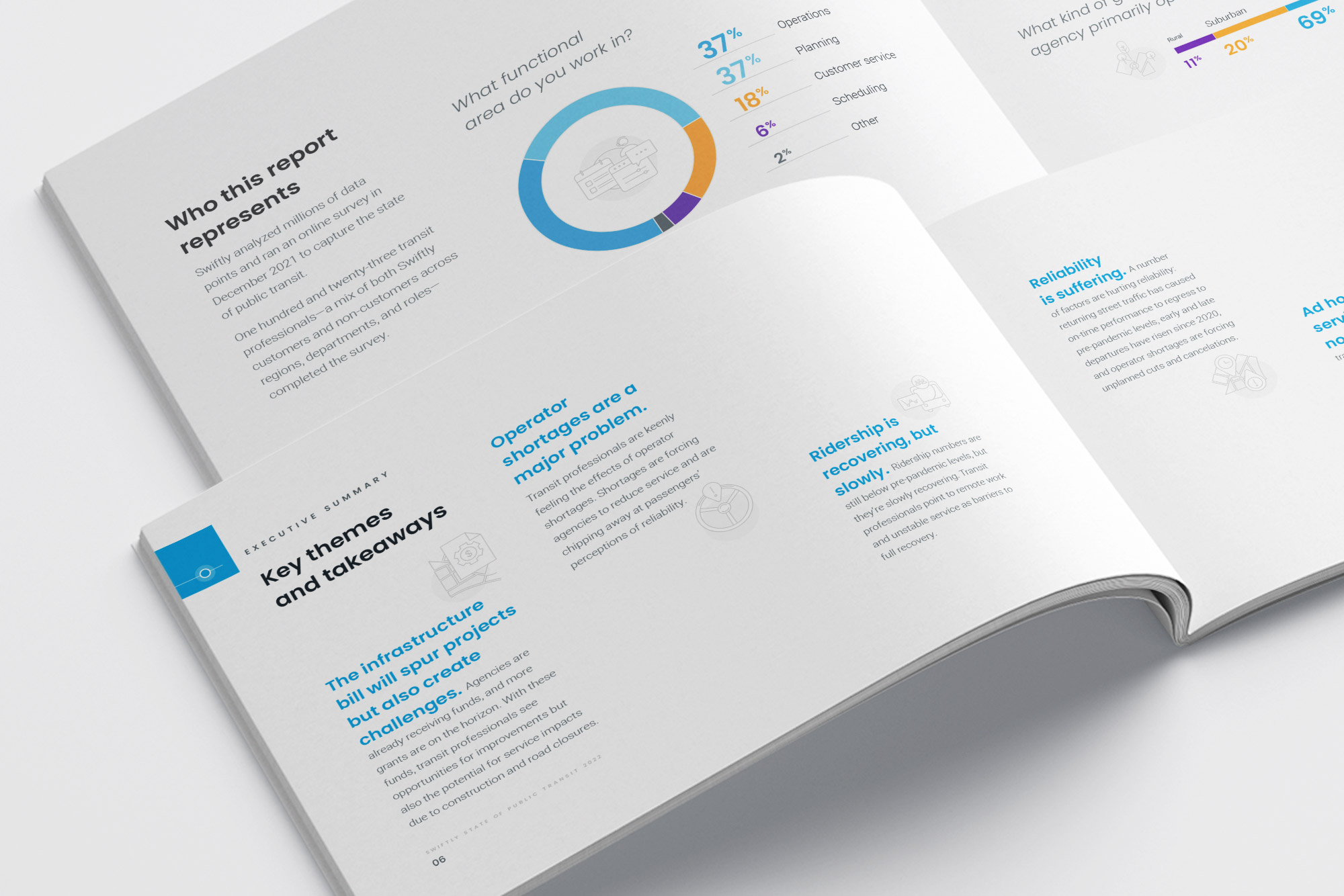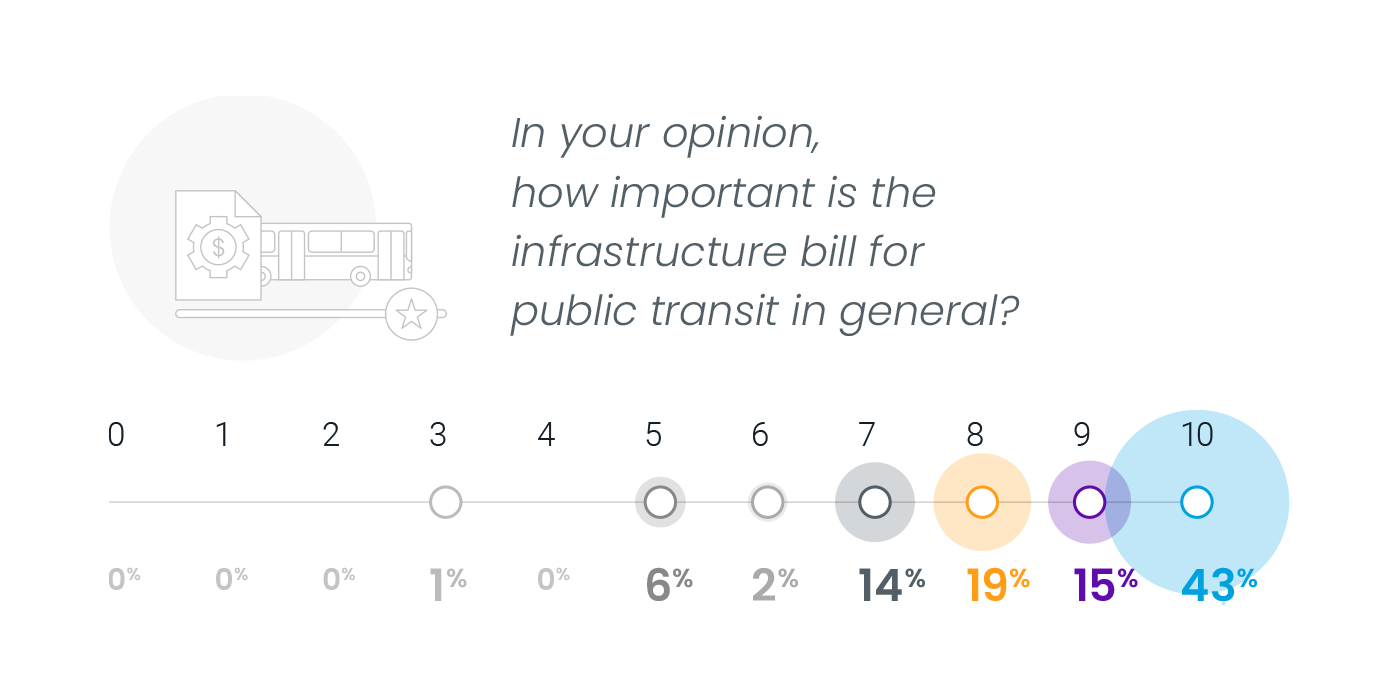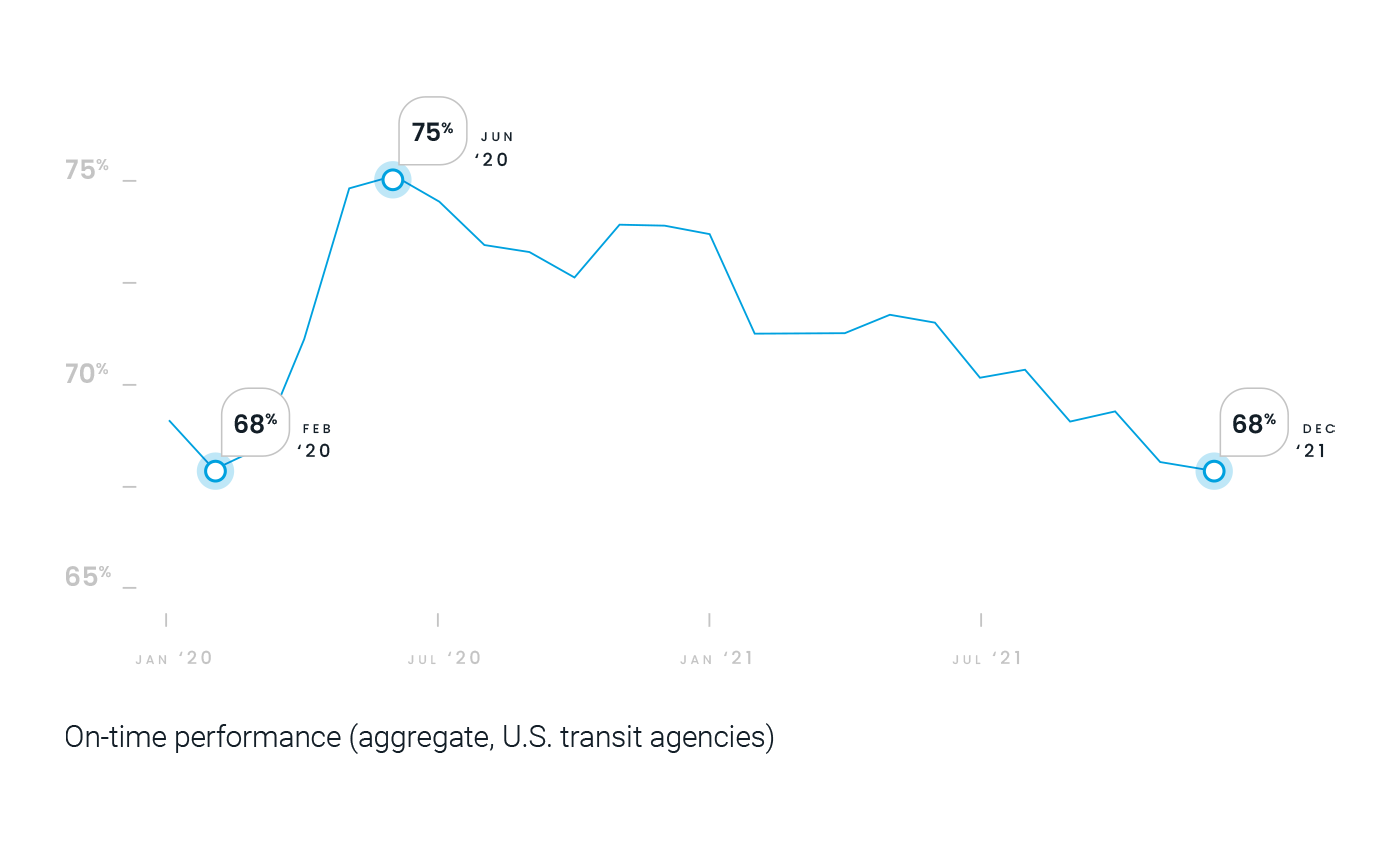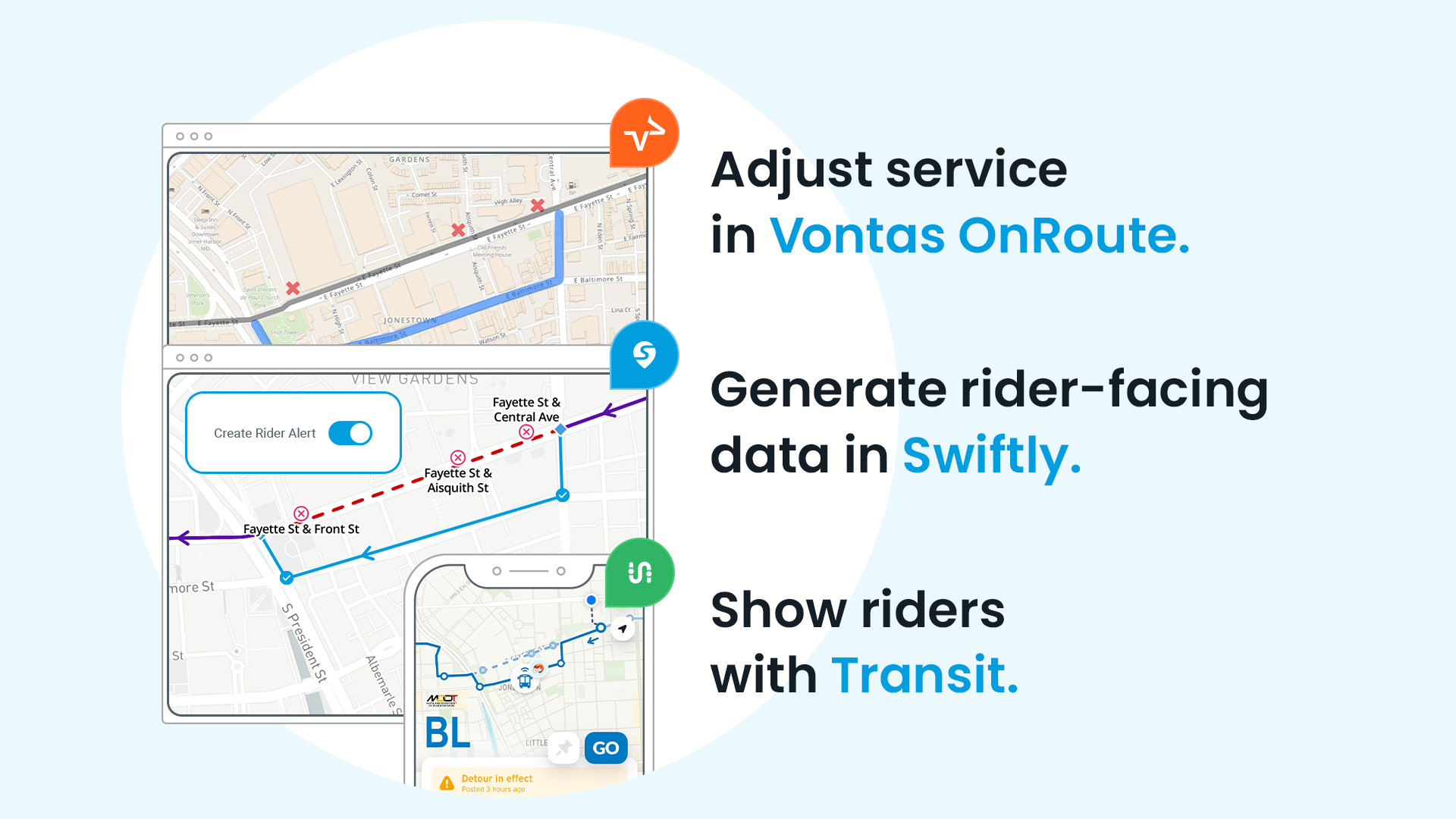Swiftly: Top Takeaways from the State of Public Transit 2022
Every year we publish our State of Public Transit to get a snapshot of the opportunities and challenges facing the transit industry. This year, we analyzed millions of data points and conducted an in-depth survey of transit professionals to dig into what makes public transit tick.
We’re excited to announce our latest edition of the State of Public Transit report, downloadable here.

The 2022 edition of the State of Public Transit shows a transit industry in flux. A lot has changed in the last 12 months: Operator shortages, changing commute patterns, and lagging ridership have all become major sources of pain for transit agencies, and transit professionals have described the difficulties of adapting to shifting commute patterns and rider priorities.
The last 12 months have also brought new opportunities. Agencies are finding ways to overhaul decades-old processes and improve reliability amid the second year of the COVID-19 pandemic.
Here are the top takeaways from this year’s report.
1. The infrastructure bill is poised to spur projects but will also create challenges.

Last year, US legislators passed $39 billion in spending for public transit. Agencies are already receiving funds from the bill, and more grants are on the horizon.
Over three quarters of transit professionals view the infrastructure bill as “very important,” “extremely important,” or “landmark legislation.” However, they also see the potential downsides of the funding. In particular, they foresee service impacts due to construction and road closures.
We also found that transit professionals don’t necessarily agree with how their agencies plan to spend the funds. Notably, they wish their agencies would spend more on sustainability, hiring incentives, and climate initiatives.
2. Operator shortages are a major problem.

A severe shortage of operators is forcing transit professionals to cut service, sometimes by up to 50% of scheduled trips. The problem is affecting agencies of all types, with about two thirds of agencies cutting service in the past six months due to operator shortages.
Agencies are failing to alert riders of these changes. 65% of transit professionals report that they don’t send immediate alerts of ad hoc changes. These challenges are chipping away at riders’ perceptions of transit reliability and, as a result, ridership recovery.
3. Ridership is recovering, but slowly.

Ridership numbers are still below pre-pandemic levels, but riders are slowly returning. Transit professionals point to remote work and unstable service as barriers to full recovery.
Rider sentiment has changed as well. COVID safety is no longer the top concern for riders that haven’t returned to transit. They now cite the accuracy of real-time information as the number one priority that would re-attract them to transit.
4. Reliability is suffering.

On the whole, on-time performance was down nearly 10% in 2021, and early and late departures each rose by about 5%.
A mix of external factors drove these changes. Street traffic began to bounce back from the lows of 2020, creating unpredictable road conditions. Operator shortages, too, created difficulties for agencies, with canceled trips causing major reliability issues.
5. Ad hoc changes to service are the new normal.

Ad hoc changes to service – including canceled trips, closed stops, and detours – have become a defining characteristic of operating transit over the last 12 months. 60% of transit professionals report that their agencies make ad hoc changes to service at least once a week.
Communicating these changes to passengers has become a major challenge. 65% of transit agencies don’t inform riders of changes immediately, and 13% say that they never communicate ad hoc changes to riders.
6. Agencies are adapting to constantly shifting traffic patterns.

Rider behavior has changed significantly over the last two years. Remote work has redefined commuting patterns, and agencies are changing how they approach service based on these new patterns.
Peak hour ridership is about 20% lower than pre-pandemic levels, and run-times have become much more difficult to predict as well.
Download the full 2022 State of Public Transit report here, and watch a recording of our webinar here.
This article was originally published by Swiftly.








